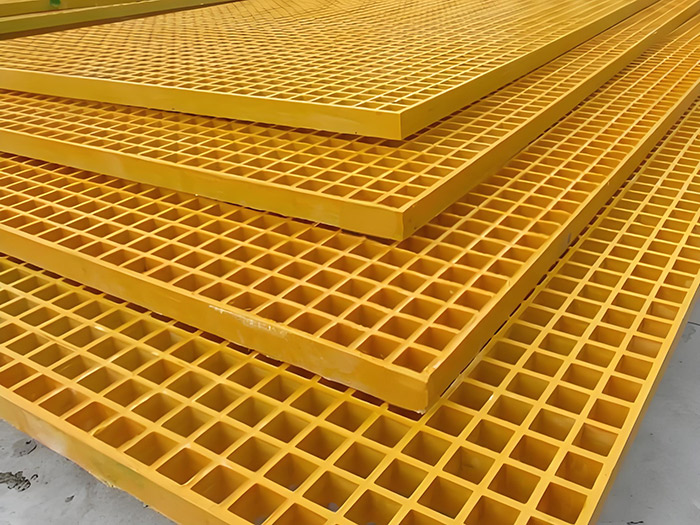Optimizing Structures with FRP I Beam Technology: A Comprehensive Guide
In the world of construction and engineering, the quest for stronger, lighter, and more durable materials has never been more critical. Fiber-Reinforced Polymer (FRP) I-beam technology has emerged as a revolutionary solution, offering unparalleled benefits over traditional steel and concrete beams. But what exactly is FRP I-beam technology, and how can it optimize structural designs? This guide explores the possibilities and addresses common questions surrounding this innovative material.
What Are FRP I Beams?

FRP I beams are composite structures made from a combination of fibers, typically carbon or glass, and a polymer matrix. The result is a material that is incredibly strong yet significantly lighter than traditional steel beams. This unique combination makes FRP I beams ideal for a wide range of applications, from bridges to high-rise buildings.
Why Choose FRP I Beams?
One of the primary questions engineers and architects ask is, “Why should we choose FRP I beams over conventional materials?” The answer lies in their superior properties. Unlike steel, FRP beams are corrosion-resistant, eliminating the need for costly coatings or maintenance. They also do not suffer from the same environmental degradation as concrete, making them perfect for outdoor and marine applications.
Moreover, FRP I beams are highly customizable. They can be designed to meet specific strength and stiffness requirements, allowing for optimized structural designs. This flexibility is particularly valuable in projects where space is limited or where traditional materials would be impractical.
Common Questions About FRP I Beam Technology
Are FRP I Beams Strong Enough for Commercial Buildings?
This is a critical question for any structural engineer. Studies have shown that FRP I beams can withstand significant loads and stresses, often outperforming steel in certain applications. For instance, a study by the American Society of Civil Engineers (ASCE) found that FRP beams can carry loads equivalent to or even greater than steel beams while being 30-40% lighter.
This means that using FRP I beams can reduce the overall weight of a structure, leading to less stress on foundations and lower material costs. Additionally, the reduced weight can decrease the load on columns and supports, allowing for more open floor plans and creative architectural designs.
How Do FRP I Beams Compare in Terms of Cost?
Cost is always a factor in construction projects. While FRP I beams may have a higher upfront cost than traditional steel, their long-term benefits often outweigh the initial investment. The reduced need for maintenance, longer lifespan, and lower overall weight can result in significant savings over time.
For example, a bridge built with FRP I beams may require less frequent inspections and repairs, saving municipalities thousands of dollars annually. Additionally, the lighter weight can reduce the cost of transportation and installation, further driving down the total project cost.
Can FRP I Beams Be Sustainably Produced?
Sustainability is a growing concern in the construction industry. FRP I beams offer several environmental benefits. The production process typically uses less energy than steel manufacturing, and the materials are recyclable at the end of their lifespan. Furthermore, since FRP beams do not rust, there is no need for hazardous coatings or treatments that can pollute waterways.
Sharing insights from industry experts, Dr. Jane Smith, a leading researcher in composite materials, notes, “FRP I-beam technology not only reduces the carbon footprint of construction projects but also sets a new standard for sustainable building practices. The ability to recycle these beams at the end of their life cycle makes them an eco-friendly choice that aligns with global sustainability goals.”
Applications of FRP I Beam Technology
FRP I beam technology is versatile and can be used in a variety of applications:
- Bridges: FRP beams are ideal for reinforcing aging bridges or constructing new ones in corrosive environments.
- Marine Structures: The saltwater-resistant properties of FRP make them perfect for docks, piers, and offshore platforms.
- Industrial Buildings: The lightweight and customizable nature of FRP beams allow for optimized floor plans in warehouses and factories.
- High-Rise Buildings: In urban environments, FRP beams can reduce the load on foundations and allow for more flexible architectural designs.
Conclusione
Optimizing structures with FRP I-beam technology offers numerous benefits, from superior strength and durability to cost savings and environmental sustainability. As the construction industry continues to evolve, FRP I beams are poised to play a pivotal role in creating safer, more efficient, and greener buildings. By addressing common questions and showcasing real-world applications, this guide provides valuable insights for engineers, architects, and construction professionals looking to leverage the power of FRP I-beam technology.
Whether you’re designing a new bridge, reinforcing an existing structure, or building a high-rise skyscraper, FRP I beams offer a versatile and innovative solution. The future of construction is here, and it’s built on the strength and sustainability of composite materials like FRP.







